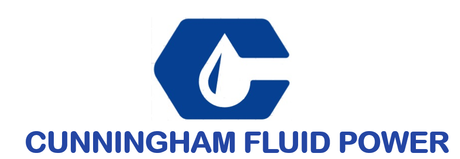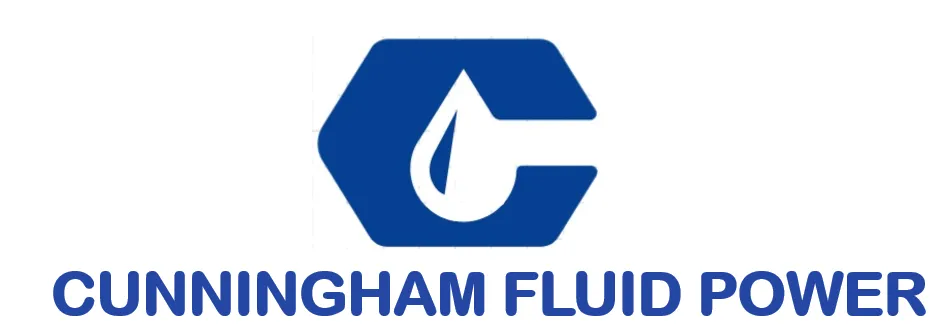Unlocking Efficiency: The Future of Supply Chain Management with Passive RFID Tags
As the global supply chain landscape continues to evolve, businesses are increasingly turning to innovative technologies to enhance operational efficiency and visibility. One such technology making waves is the Passive RFID Tag, which has been reported to reduce inventory-related costs by up to 25% and improve accuracy by 30% (Source: Aberdeen Group). These tags, which require no internal power source and can be read at long distances, are becoming indispensable in various industries, from retail to manufacturing. Furthermore, a report by Grand View Research highlights that the passive RFID market is expected to reach $10.5 billion by 2025, driven by the need for real-time tracking and data collection. This growing adoption speaks to the significant role that Passive RFID Tags will play in revolutionizing supply chain management, enabling companies to streamline operations, mitigate risks, and ultimately deliver better value to customers.
Emerging Trends in Passive RFID Tag Technology for Supply Chain Optimization
The emergence of passive RFID tag technology is poised to revolutionize supply chain management by enhancing efficiency and accuracy. Unlike traditional active RFID tags, passive tags do not require a battery and are activated by electromagnetic waves from an RFID reader, making them more cost-effective and easier to integrate into existing systems. As manufacturers adopt these tags, they can significantly streamline inventory tracking and reduce human error in data entry. This transition not only optimizes operations but also minimizes the environmental impact associated with battery disposal and management.
Recent advancements in passive RFID technology further bolster its application in supply chain optimization. For instance, the development of ultra-high frequency (UHF) tags allows for greater read ranges and enhanced scanning speeds, facilitating real-time data access. Additionally, the integration of Internet of Things (IoT) capabilities with passive RFID systems enables smarter inventory management solutions. By leveraging the data collected from RFID tags, businesses can gain valuable insights into their operations, identifying inefficiencies and enabling more strategic decision-making. As industries continue to embrace these emerging trends, the potential for increased transparency, reduced costs, and improved customer satisfaction becomes increasingly attainable.
Maximizing Asset Visibility: The Role of Passive RFID Tags in Inventory Management
The integration of passive RFID (Radio Frequency Identification) tags in inventory management systems is revolutionizing asset visibility across industries. According to a report by Grand View Research, the global RFID market is expected to reach $40.63 billion by 2025, primarily driven by advanced asset tracking capabilities. Passive RFID tags, which do not require an internal power source, are particularly valuable for companies seeking cost-effective solutions for tracking inventory in real time.
In supply chains where every second counts, passive RFID tags enhance asset visibility significantly. A study by the University of Arkansas shows that the implementation of RFID technology can reduce inventory discrepancies by up to 30% and improve stock accuracy to over 98%. This high level of accuracy enables businesses to respond dynamically to supply and demand changes, ensuring that shelves are stocked efficiently and reducing excess inventory and associated holding costs. Consequently, organizations leveraging passive RFID tags can not only streamline operations but also boost customer satisfaction by maintaining optimal stock levels.
Cost-Benefit Analysis: Investing in Passive RFID for Supply Chain Efficiency
Investing in passive RFID (Radio Frequency Identification) technology can yield significant cost benefits for supply chain management. These tags, which do not require an internal power source, offer an affordable solution for tracking inventory and assets throughout the supply chain. The initial implementation cost of passive RFID systems, including tags and readers, is increasingly offset by the operational efficiencies they unlock. Businesses can reduce labor costs related to manual inventory checks, minimize losses through improved visibility of stock levels, and streamline logistics operations.
The benefits extend beyond mere cost savings. Passive RFID provides real-time data, enhancing decision-making processes and reducing errors in order fulfillment. With greater accuracy in inventory tracking, companies can better manage stock levels, ensuring optimal inventory turnover and reducing waste. This not only results in direct savings but also fosters a more agile response to market demands. As supply chain complexities increase, the strategic investment in passive RFID technology positions companies to enhance efficiency, ultimately leading to improved customer satisfaction and competitive advantage in the marketplace.
Case Studies: Successful Implementations of Passive RFID in Various Industries
The integration of passive RFID (Radio-Frequency Identification) technology into supply chain management has demonstrated significant improvements across various industries.
For instance, a 2020 survey by the RFID Journal revealed that organizations implementing passive RFID saw a reduction in inventory inaccuracies by up to 30%. This technology allows for automatic tracking of assets, thereby enhancing visibility and efficiency in supply chains.
 In the retail sector, companies like Walmart have successfully utilized passive RFID tags to streamline their inventory management processes. According to a case study published by GS1, Walmart reported that the implementation of RFID led to a 16% increase in sales due to improved stock availability.
In the retail sector, companies like Walmart have successfully utilized passive RFID tags to streamline their inventory management processes. According to a case study published by GS1, Walmart reported that the implementation of RFID led to a 16% increase in sales due to improved stock availability.
Similarly, in the manufacturing industry, aerospace companies have turned to passive RFID to enhance tracking of parts and materials, resulting in a 50% reduction in search times for components, as highlighted in a report by the American Journal of Industrial Technology.
These examples underscore the versatility and effectiveness of passive RFID across different sectors, paving the way for a more efficient future in supply chain management.
Future Projections: The Impact of Passive RFID on Supply Chain Disruptions and Risks
As supply chains become increasingly complex, the incorporation of passive RFID (Radio Frequency Identification) tags presents a transformative opportunity to mitigate disruptions and manage risks effectively. These small, battery-free devices offer real-time tracking of inventory, allowing companies to gain better visibility throughout their supply chain. This enhanced transparency not only streamlines operations but also enables businesses to respond quickly to unforeseen challenges, ultimately reducing downtime and improving resilience.
**Tips:** To maximize the benefits of passive RFID, companies should begin by conducting a thorough assessment of their current supply chain processes. Identifying bottlenecks and areas prone to disruption will inform where RFID implementation can yield the most significant impact. Additionally, collaborating with technology providers can facilitate a smoother integration process, ensuring that the chosen RFID solution aligns well with existing systems.
Looking ahead, passive RFID implementation is set to reshape how supply chain risks are managed. By providing comprehensive data on product movement and inventory levels, companies can enhance their forecasting accuracy and inventory management. This proactive approach to supply chain management not only reduces the likelihood of stockouts but also helps mitigate the financial implications of overstock situations, ultimately paving the way for a more resilient supply chain ecosystem.
**Tips:** Regular training for staff on using RFID technology is critical for maximizing its potential. A knowledgeable team can better interpret data and make informed decisions, further driving efficiency and effectiveness in supply chain operations.
Unlocking Efficiency: The Future of Supply Chain Management with Passive RFID Tags
| Aspect | Current Impact | Future Projections | Risks & Challenges |
|---|---|---|---|
| Inventory Management | Reduce stock discrepancies by 30% | Potential 50% reduction in stock-outs | Integration complexities |
| Shipment Tracking | Real-time tracking accuracy at 85% | Expected increase to 95% accuracy | Data security concerns |
| Operational Costs | Current savings of 15% | Potential savings up to 30% | High initial implementation cost |
| Customer Satisfaction | Satisfaction rate at 75% | Target to reach 90% satisfaction | Resistance to change from staff |

We have over 30 years of experience in designing complete hydraulic systems, repairs and distribution of fluid power equipment and parts.
FOLLOW US ON :
Contact Details
Address:
4020 SE 45th CT.
Ocala, FL 34480
Phone No:
Email:
sales@cunninghamfluidpower.com

